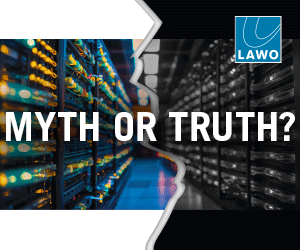Chris Pollard discusses why hybrid technology is the way forward On the face of it, delivery of TV services over the internet, or over a private network, has a lot going for it. It avoids the expense and variability of renting satellite transponder space, and it allows the broadcaster much better control over the distribution […]
Chris Pollard discusses why hybrid technology is the way forward
On the face of it, delivery of TV services over the internet, or over a private network, has a lot going for it. It avoids the expense and variability of renting satellite transponder space, and it allows the broadcaster much better control over the distribution of their content. It is easier to control and limit piracy – in theory, at least – and allows the broadcaster to sell packages which the viewer can tailor to their own needs. So, although broadband delivery has been with us for a while, it hasn’t taken over the world. Why is that?
There are many reasons, but one stands out. Particularly in the Middle East, there simply hasn’t been the widespread availability of sufficient, reliable bandwidth to support real-time broadband TV; that is, streamed services, or real-time video on demand. This means that the kind of services which can be offered are all non-real time, unless the viewer is prepared to put up with rather poor quality, reduced size video. Fine for YouTube, less so for quality premium services such as movies or sport.
Download and play, where the viewer orders, say, a movie in advance and waits for it to download, is a valid model, but is not really a substitute for live TV. Sure, a download and play model, where the viewer can start to watch the programme before it has all been downloaded, are a possibility, but its really still not a live service.
Hybrids can be a way out of this. A hybrid, simply, is a set top box which can receive both conventional satellite or terrestrial broadcast TV, and also access the internet or a private network to be able to download or stream broadband delivered content – depending on bandwidth, as we have already seen. Most viewers are familiar with the way that conventional TV works, and this can be used as an enabling technology to ease the acceptance of broadband TV.
Watching broadband TV on a conventional TV might be unusual to many viewers, but having both satellite and broadband available on the same TV set, accessed by the same box, and using similar control screens, means that the familiarity with conventional TV can be used to ease the path into using broadband TV. This is an important point in the design of the box; the viewing experience between broadband and satellite should be as seamless as possible if this is going to work.
There is another benefit to considering hybrids as the way forward, this time for the broadcasters themselves. Satellite and terrestrial TV may be declining, but they aren’t dead yet, and there will be a transitional period when both satellite/terrestrial TV and broadband TV will have to co-exist. This gives the opportunity for the broadcaster to get enhanced uptake of their content by making some programming available on both types of TV.
Why would the viewer want this? Well, one of the ways this works is for the satellite or terrestrial service to broadcast the original programming live, and then that same content made available as a downloaded catch-up service, either so that viewers can watch it again, or because they missed it first time around. Such catch up services (they come under different names, but are all basically the same idea) have been available in Europe for some years, and are proving extremely popular. Here, at last, is a method of getting a new revenue stream for existing content, something which is always high on the list of priorities of any commercial broadcaster.
Hybrids work in areas where bandwidth is limited, too. Viewers can watch live TV on satellite or terrestrial for their normal programming, and order special events or movies as broadband downloads to watch later. This model is more like video rental, and can be sold as an online rental service. The duration of the content on the set top box can easily be controlled (for example, number of plays, or length of time the content is viewable on the box), so there is no permanent ownership of the content by the viewer. The important point here is that the selection of the content to be downloaded, the payment and the whole download and play process, is done using the TV and the same remote, and uses menus which look like normal set top box menus. Make it simple and familiar, and people will use it.
Hybrid boxes are, of course, more complex than a satellite, terrestrial or pure broadband box, and are therefore more expensive. They do, however, provide a route to ease the viewer into thinking about using broadband services when otherwise they might be somewhat resistant. Development of a suitable hybrid box can be complicated, but there are now several manufacturers who can supply ready-designed boxes which can easily be configured to suit the broadcaster’s preferred way of working. The technology is getting easier.
Overall, the next stage in the evolution of TV is via the hybrid system. It offers the best of both worlds, and lets the broadcaster get into the broadband world without having to commit to a changeover to a completely new set of technologies and operational methods. It’s a low-risk strategy, which is an attractive option for any broadcaster wanting to protect their core business whilst, at the same time, diversifying into new methods of capturing revenue for their content. Isn’t that what we are all trying to do?
Chris Pollard is a senior consultant with more than thirty years experience in the broadcast, manufacturing and IT industries. He specialises in the worldwide analysis and commercialisation of new technologies, and is a regular contributor to broadcast industry publications.










































































